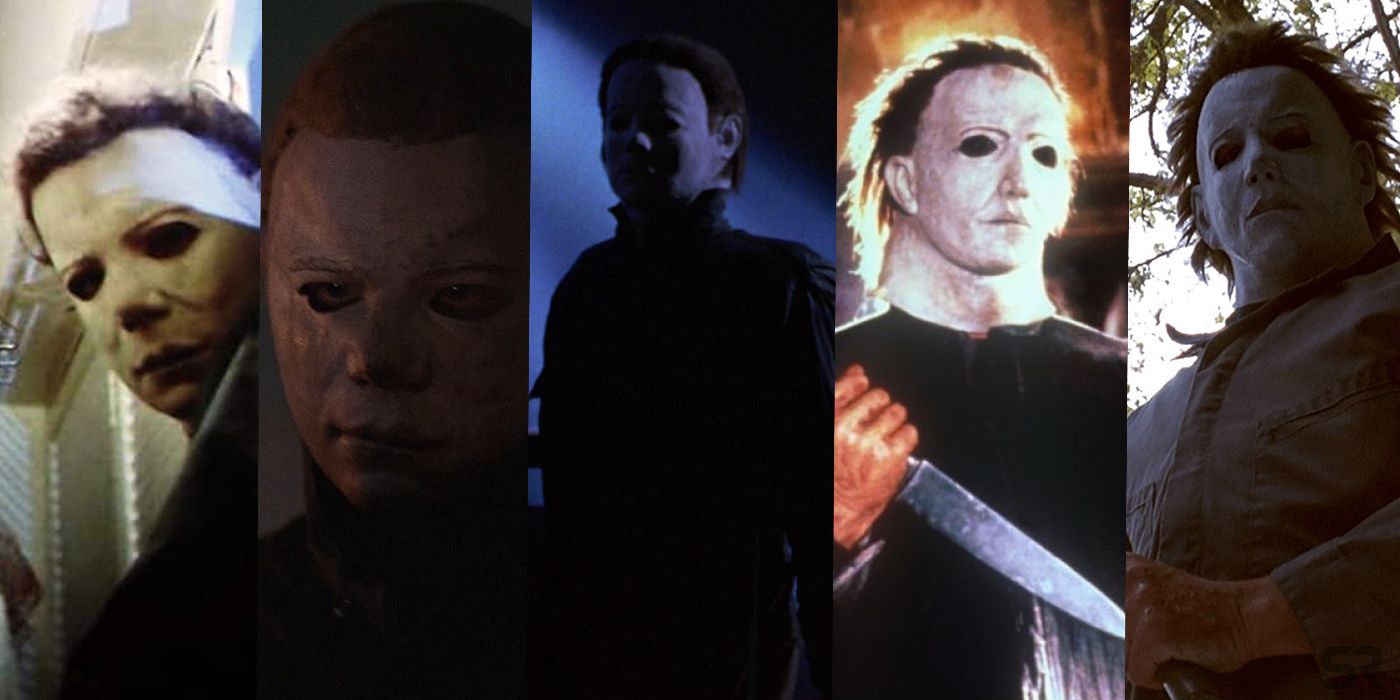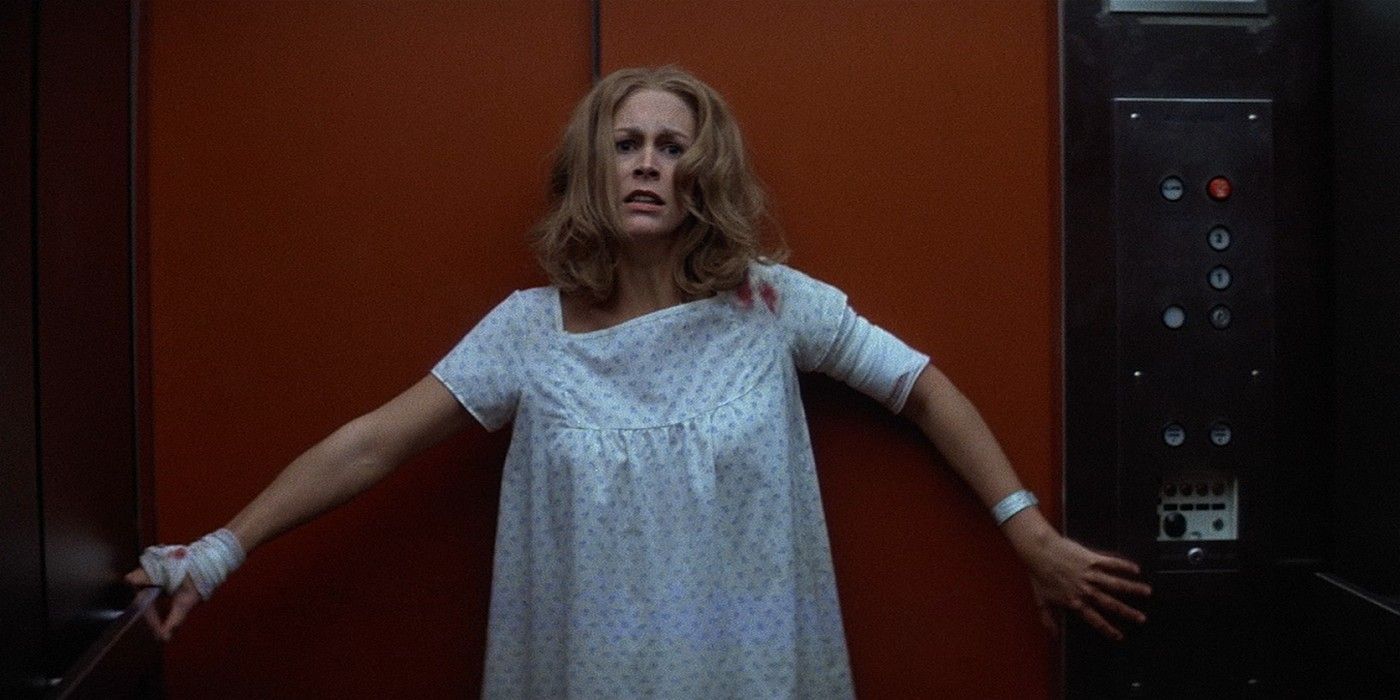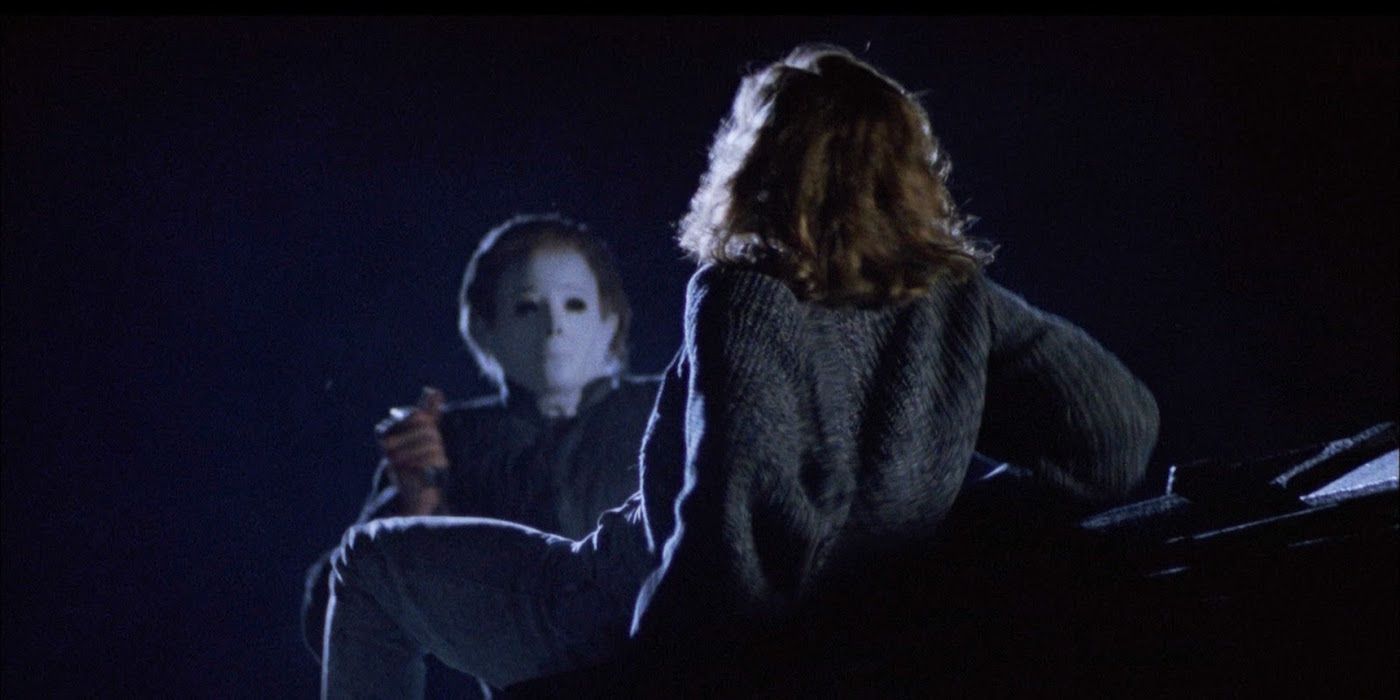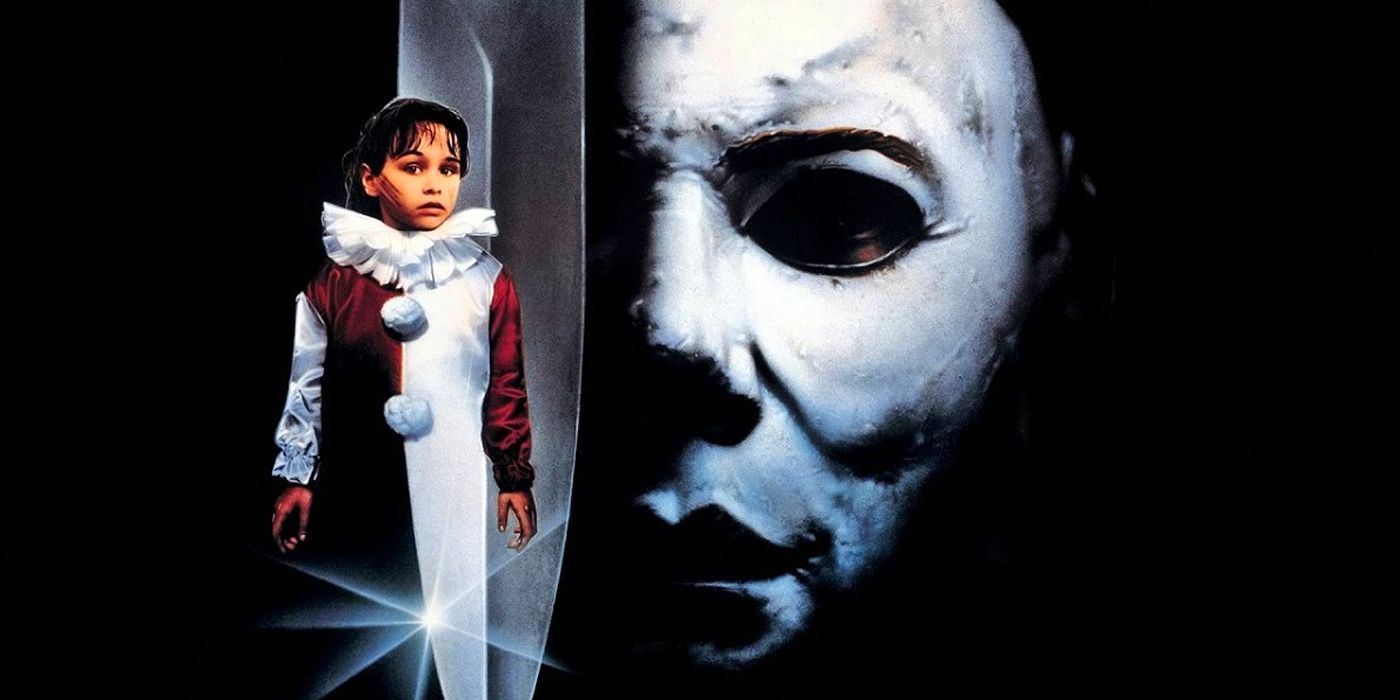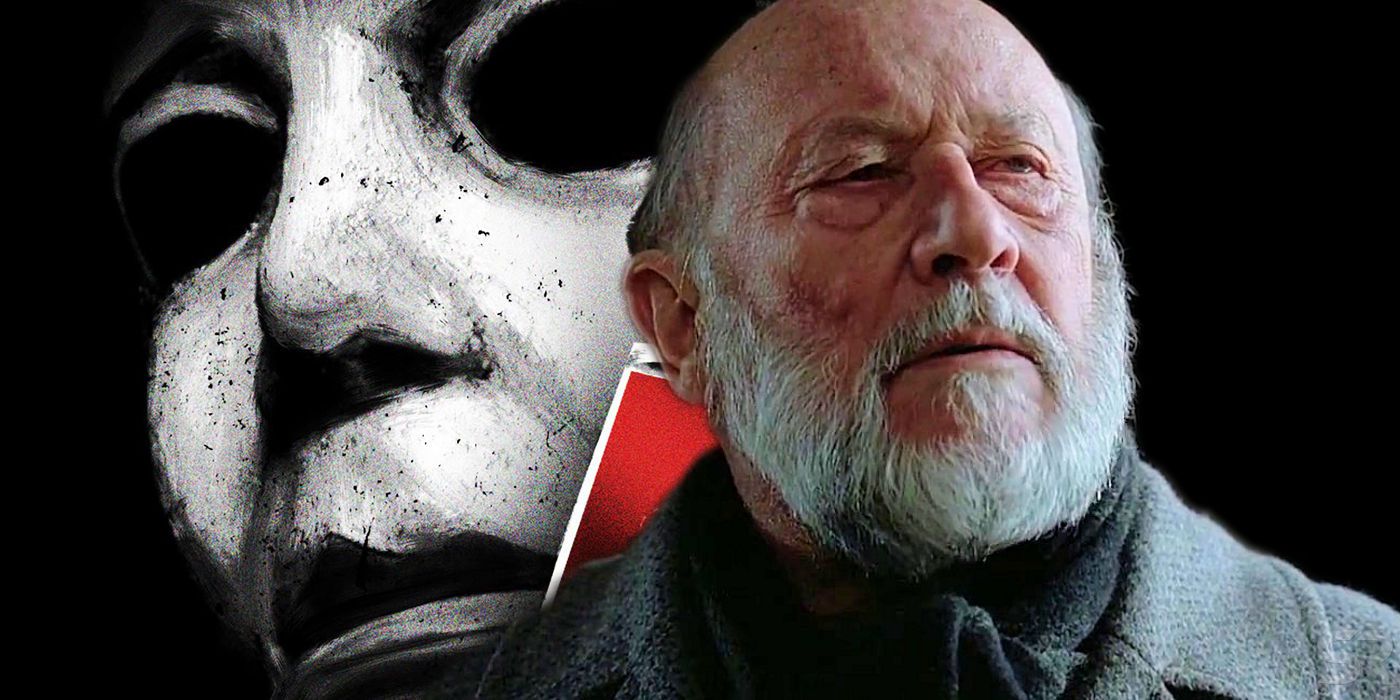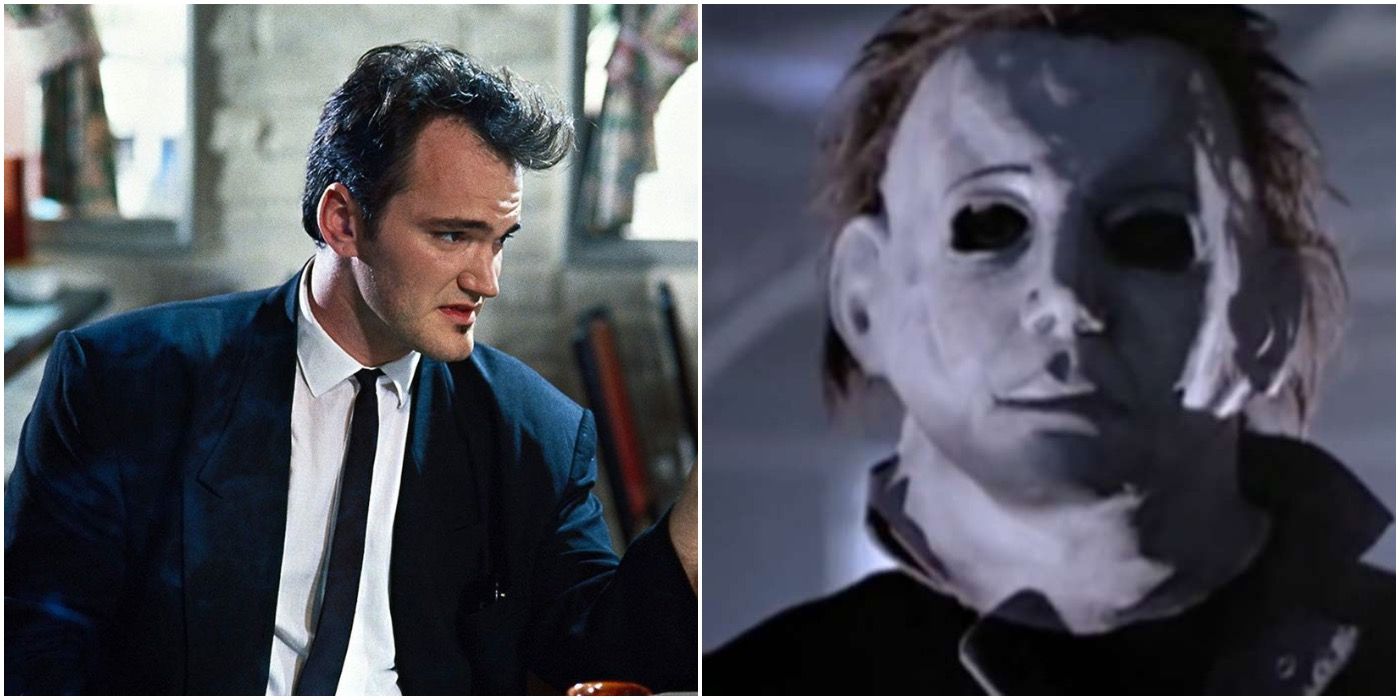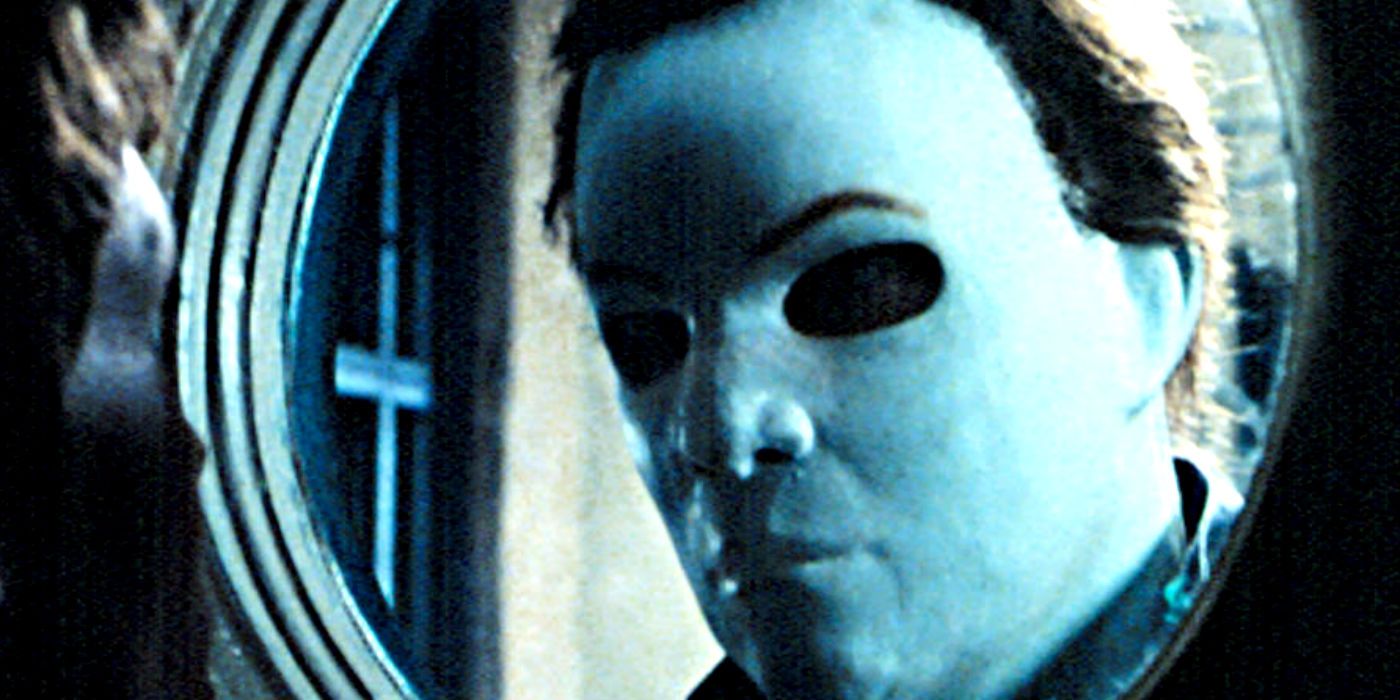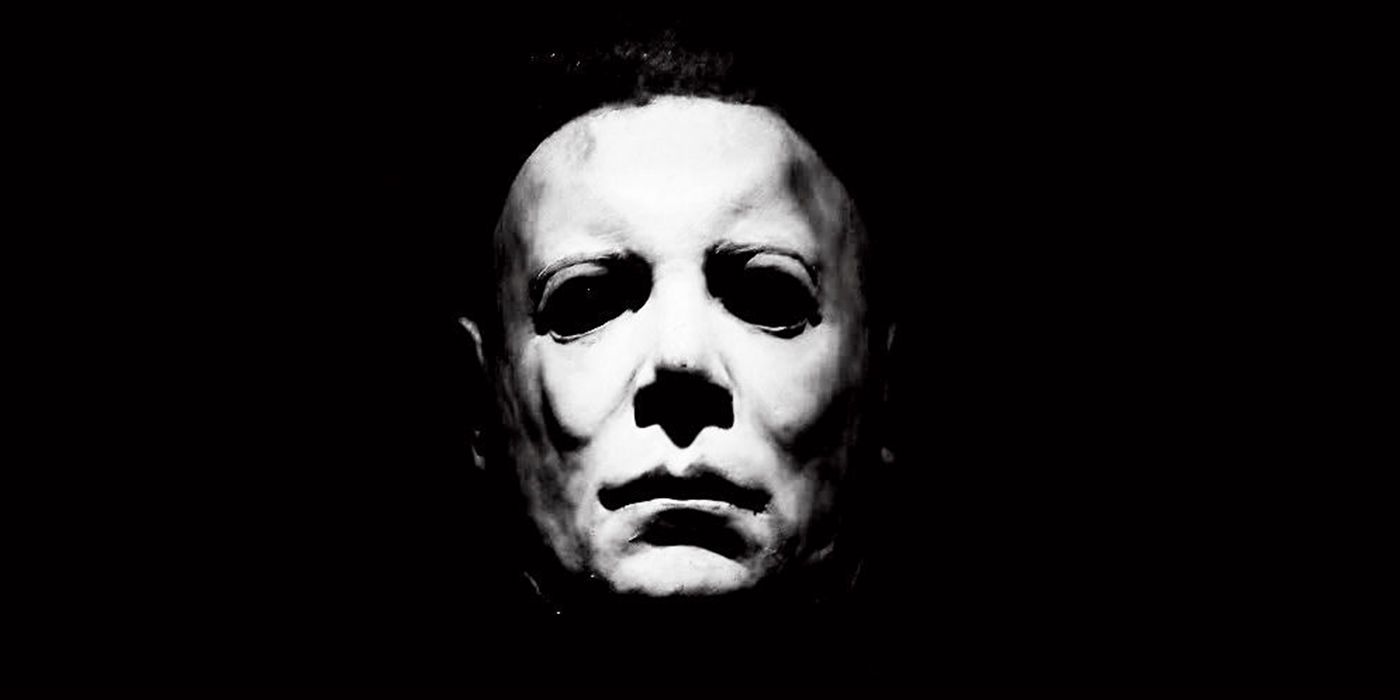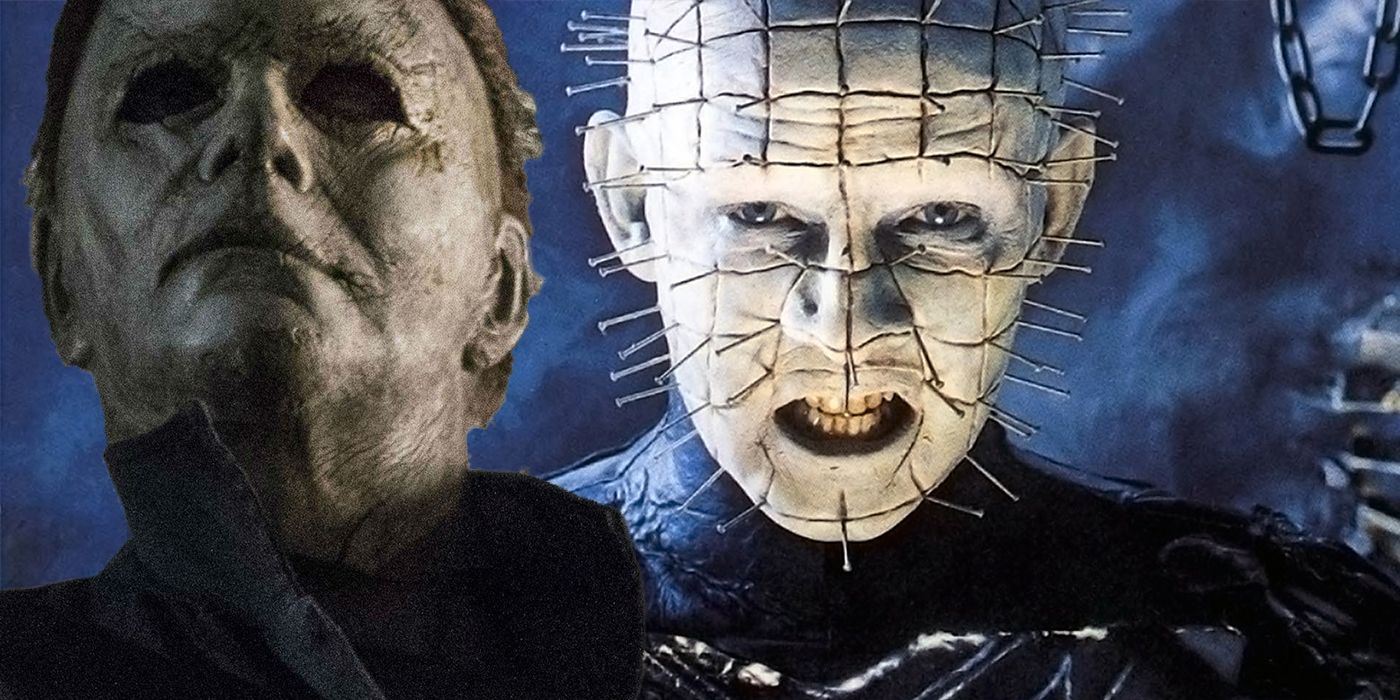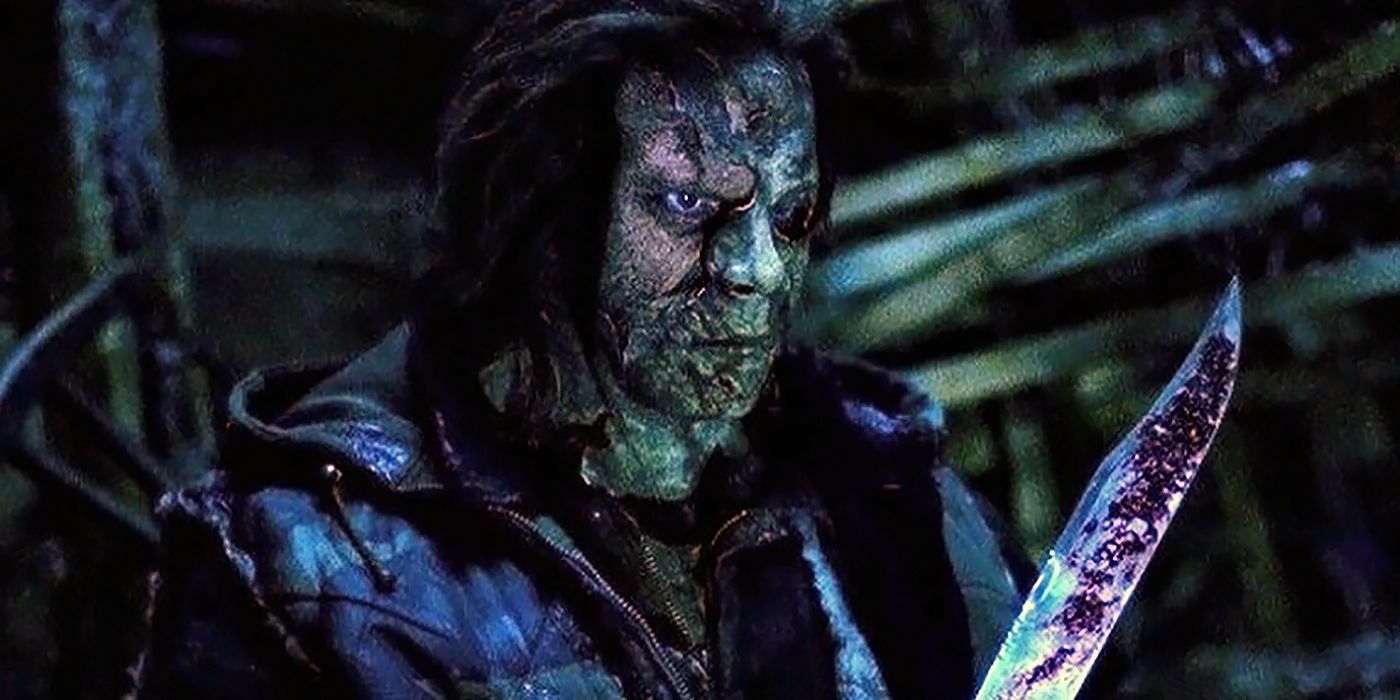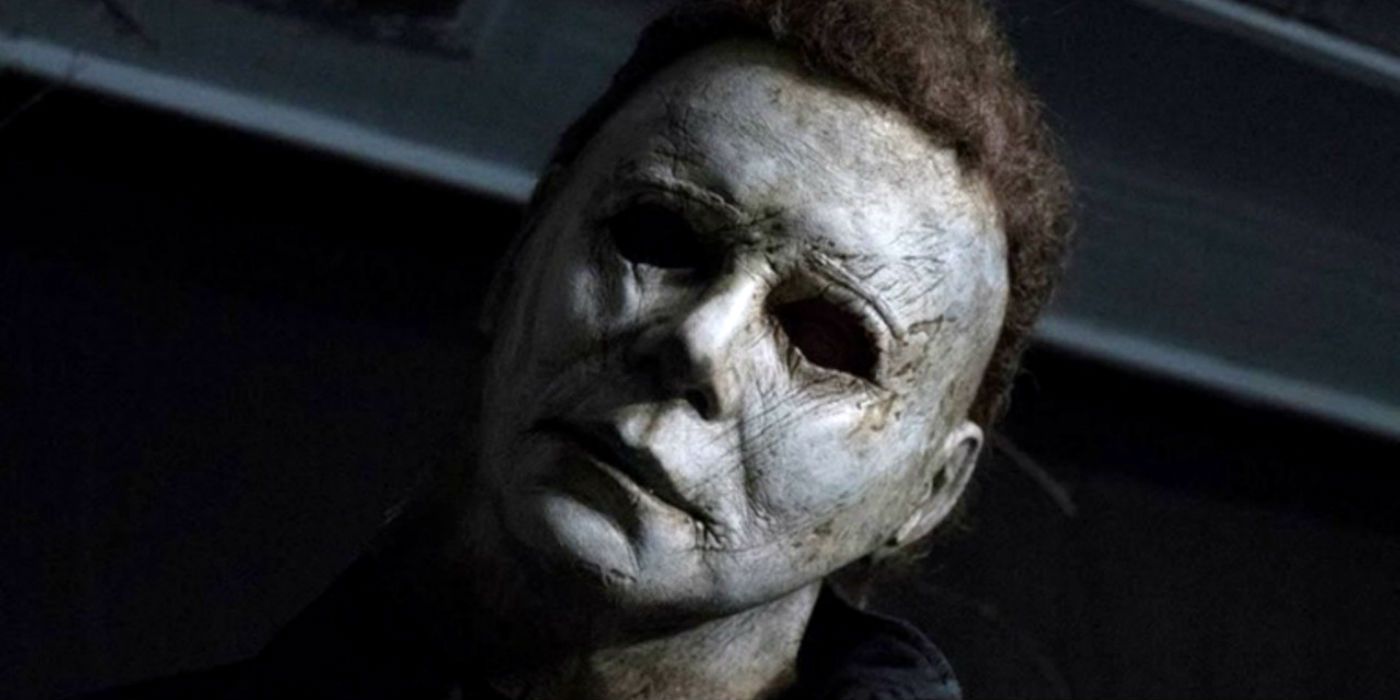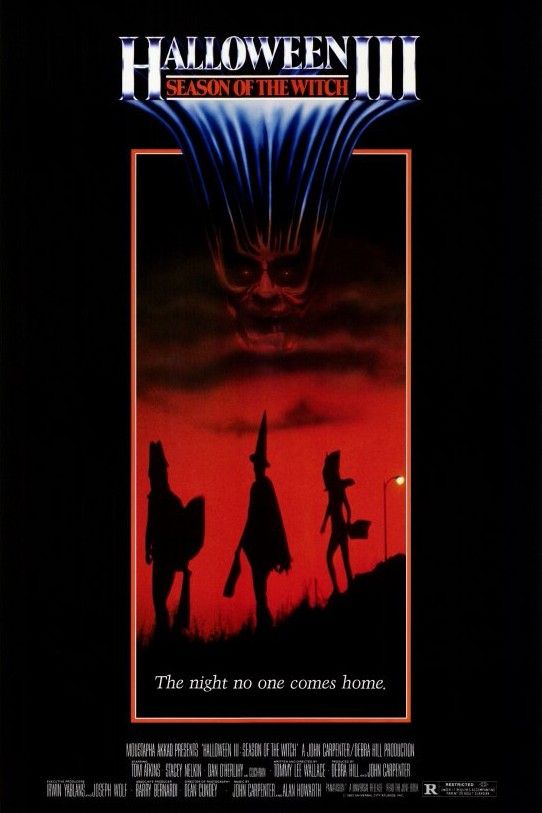Halloween introduced one of the most iconic figures in horror history and despite the fact that it spawned numerous sequel, reboots, and reimaginations, there were several planned projects that never saw the light of day. Michael Myers first terrorized audiences in 1978 with the debut of John Carpenter's Halloween. The influential film went on to spawn seven sequels, a reboot, and a revival in the four decades that followed. Thanks in part to Blumhouse, there are still multiple Halloween installments on the way, however, several others almost happened that fans will never have a chance to see.
When Halloween launched, it kept the narrative simple by introducing Michael, aka "The Shape", as a sadistic killer targeting teenager, Laurie Strode (Jamie Lee Curtis). The film ended up transforming the slasher genre seeing as many films that followed took pages out of Carpenter's playbook. As the franchise continued, the Michael Myers mythos grew but it also became a bit convoluted. With creative differences, studio rights, and competitors getting in the way, it became more and more difficult to match the tone of the film that started it all.
In the four decades since the introduction of Michael and Laurie, dozens of writers came out of the woodwork to develop new chapters of the Halloween lore. While some actually transformed into sequels, others never passed the early stages of development. Here's a breakdown of the publicized Halloween scripts and concepts that were never made.
The Original Halloween II Script
Despite the success of the franchise's first entry in 1978, John Carpenter had no interest in a sequel. The director learned that Universal was planning to make another film starring The Shape whether he was involved or not, so he later signed on to write the film, partnering back up with Debra Hill. Through his reluctance, Carpenter still refused to direct Halloween II, so Rick Rosenthal was hired. Even though Halloween II served as a continuation of Laurie Strode's struggle against Michael Myers, the original concept of the script was much different than what viewers saw in 1981.
Rather than continue directly the events of Halloween, the plans were for the sequel to pick up a few years later. Michael tracks Laurie down to the high-rise apartment building where she lives. Carpenter later changed his mind and switched the focus back to Haddonfield by expanding on the night a teenage Laurie first encountered Michael. There was also a brief consideration into making it a 3D sequel, but thankfully that fad came and went.
Dennis Etchison's Halloween 4 Script
Halloween III: Season of the Witch left the lore of Michael Myers behind and turned into an anthology for the franchise's second sequel. In the decades that followed, the film written by Tommy Lee Wallace gained a cult following. The studio and financiers, however, wanted their masked menace brought back into the spotlight. With the support of executive producer Moustapha Akkad, John Carpenter and Debra Hill came back on board to assist Dennis Etchison to write the screenplay for Halloween 4.
The concept for the 1988 film paid homage to the first two films while focusing on the fallout of the tragic events in the decade that followed. Haddonfield bans the October 31st holiday until a local drive-in breaking the rules by marathoning horror movies, an event that angers parents. Another rampage ensues while Tommy Doyle and Lindsey Wallace are still processing their trauma from their first face-to-face with Michael. The movie toys with the idea that the killer is a copy cat or some kind of supernatural being. Etchison also insinuates that Dr. Loomis could have had an influence on Michael's sadistic behavior. In the end, Carpenter and Hill sold their rights to the franchise, and Akkad took over. He rejected Etchison's script and went with the idea that the flesh and blood killer returned to Haddonfield with his sights set on Jamie Lloyd, his niece.
Dominique Othenin-Girard's Original Halloween 5 Script
Following the release of Halloween 4: The Return of Michael Myers, Moustapha Akkad was convinced that Michael Myers needed to be at the front and center of any more sequels. After Halloween 5 was greenlit, Dominique Othenin-Girard was tapped to direct. He partnered with Robert Harders, and the pair had a very different idea in mind to further the lore of The Shape.
Rather than trying to blow Michael up after he fell down a mine-shaft in Halloween 4, the killer is left for dead. A strike of lightning resurrects Michael and cleanses the evil that once plagued his soul. Taking a page from Mary Shelley's Frankenstein's monster, Michael is now a misunderstood gentle giant. His reemergence, however, doesn't sit well with the townspeople, so they go after him. Any of Michael's killings are purely out of self-defense, and Dr. Loomis volunteers to help him. Understandably, Akkad wasn't too keen on this idea, so he rejected the version of the script.
Phil Rosenberg's Halloween 666: The Origin
In the six years between Halloween 5: The Revenge of Michael Myers and Halloween: The Curse of Michael Myers, a number of writers emerged to pen the next film in the franchise. Among them was Phil Rosenberg who created a script titled Halloween 666: The Origin. The script focuses on Michael Myers, living as a homeless man years after his last massacre. Tommy Doyle, now an adult, takes over as the Dr. Loomis-type character and teams up with a reporter named Dana who of course, turns out to be a relative of Michael. Aside from a cameo from Dr. Loomis as a self-committed asylum patient, the sequel would have oddly incorporated Tommy using a VR program to witness the cure of the Myers family at a Samhain festival. Akkad was not a fan of the script, and went in another direction.
Quentin Tarantino's Halloween 6 Idea
During the development stage of Halloween 6, filmmaker Quentin Tarantino was approached by Miramax. Tarantino never wrote an official script, but he presented a few interesting ideas. It would have incorporated the "Man in Black", who was presented at the end of Halloween 5, and Michael Myers fleeing Haddonfield. The duo then would travel the highway, leaving a trail of bodies along Route 66 as a nod to Natural Born Killers. Miramax ended up going in a different direction, and Tarantino went on to create Pulp Fiction.
Robert Zappia's Halloween 7 Script
Before the development of Halloween: H20 came to fruition, Robert Zappia came up with a direct-to-video concept for the franchise's seventh installment. It was meant to follow Michael Myers preying on students at an all-girls prep school. A family member of Michael's would have attended the school, and there was hope that Jamie Lee Curtis would reprise her role. The movie would have also included a Silence of the Lambs style subplot, which involved the police getting assistance from a copycat killer to track down Michael.
Halloween: Asylum
In 2004, Matt Verne and Josh Goldfinger envisioned a loose sequel to 2002's Halloween: Resurrection. It primarily referenced the original film and focused on Michael Myers while he was on death row. He then broke free and wreaked havoc on Smith's Grove Sanitorium. The script was never picked up by Dimension, the franchise's owner at the time, but some elements were incorporated into Rob Zombie's Halloween reboot.
Michael Myers Vs. Pinhead
Following the success of Freddy vs. Jason in 2003, Dimension became interested in putting Michael Myers and Pinhead together. The production company owned the rights to both characters, so they approached John Carpenter and Clive Barker regarding a Halloween/Hellraiser crossover. This wound up being the second proposed attempt at a crossover after filmmaker Dave Parker pitched the idea in the 1990s. He came up with the idea that a young Michael was possessed by the Lament Configuration puzzle box, and eventually squared off against Pinhead. Even with Barker writing the newer concept and Carpenter's interest in directing, Moustapha Akkad wasn't too fond of the idea.
Rob Zombie's Halloween 3D
When Rob Zombie rebooted Halloween in 2007, he also reimagined Michael Myers' origins and his thirst for blood. The result was a disturbing increase in violence and gore. While some were onboard with Zombie's vision, other loyal followers of the franchise were not. Zombie wound up developing a sequel, Halloween II, in 2009 and although the Director's Cut killed off Michael, Laurie Strode, and Dr. Loomis, the theatrical version left the door open for another installment.
Not only did Laurie survive, but she was plagued with the Myers family's madness. Dimension planned for a sequel that would have shown Laurie joining Michael before he is presumably killed and she is committed to an asylum. The plot shifts to the hospital as a reboot of the original Halloween II film, as Michael returned. Laurie, not being able to deal with the course of events, kills herself, and Michael goes on yet another rampage. As another interesting element, Dimension had the idea to produce the sequel in 3D. Zombie declined to direct the film, and the idea was later abandoned entirely.
Halloween Returns
In 2015, the Halloween franchise nearly entered another soft reboot with the development of Halloween Returns. The script, written by Patrick Melton and Marcus Dunstan, was meant to serve as a sequel to the first two original films. Halloween Returns supposedly takes place in 1988 while Michael Myers is on death row and sees the return of Halloween II's Officer Gary Hunt. Before his execution, a power outage allows Michael to escape, and he targets Hunt's young daughter. Carnage then ensues in Russellville, the neighboring town to Haddonfield.
The Halloween revival was preparing to film until Dimension ended up losing the rights to the franchise. Blumhouse then took over with David Gordon Green at the helm as director and came up with a fresher concept regarding how to retcon some of the franchise's past. After the success of 2018's Halloween, Blumhouse will finish off the modern-day trilogy with 2020's Halloween Kills and 2021's Halloween Ends.

